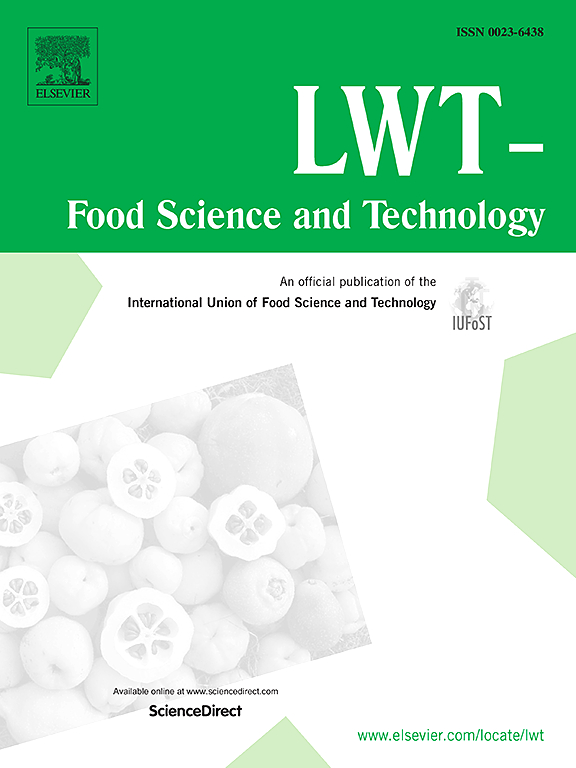Exploration of cobalt-based colorimetric aptasensing of zearalenone in cereal products: Enhanced performance of Au/CoOOH nanozyme
IF 6
1区 农林科学
Q1 FOOD SCIENCE & TECHNOLOGY
引用次数: 0
Abstract
Zearalenone (ZEN) poses significant threats to food safety and human health due to its widespread contamination in cereals. Current detection methods face limitations in cost, complexity, and field applicability. To address this, we developed a novel colorimetric aptasensor leveraging the peroxidase-like activity of Au/CoOOH nanozymes for rapid and sensitive ZEN detection. Systematic characterization of cobalt-based nanomaterials (β-Co(OH)2, Co3O4, CoOOH, and Au/CoOOH) revealed that Au/CoOOH exhibited the highest catalytic efficiency, achieving a 3.5-fold enhancement over CoOOH due to synergistic interactions with Au nanoparticles. The aptasensor employed a competitive displacement strategy: ZEN binding to aptamer-functionalized magnetic beads released cDNA-conjugated Au/CoOOH, reducing 3,3′,5,5′-tetramethylbenzidine oxidation signals. Optimized parameters enabled a linear detection range of 0.3–500 ng/mL with a detection limit of 0.23 ng/mL. Specificity tests confirmed minimal cross-reactivity with other mycotoxins. The sensor demonstrated exceptional sensitivity, specificity, and practicality, validated by recovery rates of 90.65–105.63 % in spiked matrices, positioning it as a reliable tool for safeguarding food safety through rapid, precise mycotoxin monitoring.
求助全文
约1分钟内获得全文
求助全文
来源期刊

LWT - Food Science and Technology
工程技术-食品科技
CiteScore
11.80
自引率
6.70%
发文量
1724
审稿时长
65 days
期刊介绍:
LWT - Food Science and Technology is an international journal that publishes innovative papers in the fields of food chemistry, biochemistry, microbiology, technology and nutrition. The work described should be innovative either in the approach or in the methods used. The significance of the results either for the science community or for the food industry must also be specified. Contributions written in English are welcomed in the form of review articles, short reviews, research papers, and research notes. Papers featuring animal trials and cell cultures are outside the scope of the journal and will not be considered for publication.
 求助内容:
求助内容: 应助结果提醒方式:
应助结果提醒方式:


